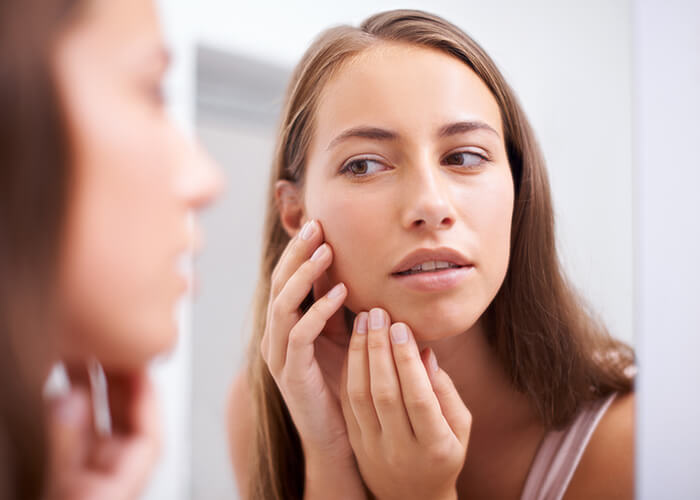- Home
- Body
- Face
- Cosmetic
- Skin Tightening & Toning
- Injectables
- Facials & Peels
- Blepharoplasty
- Hair
- Men
- Conditions
- VER Skincare
- PRICING & SPECIALS
- Our Devices
- About Us
- Payment Plans
- Blog
- Contact Us
Are you looking for a way to give your skin a healthy glow and enhance your natural beauty? Then dermaplaning might be exactly what you need! This simple yet highly effective treatment offers transformative benefits that can make you feel more confident in your own skin. Our team of providers are highly experienced and qualified. They’ve even undergone the same procedure themselves, which means they understand the patient experience inside and out. This means they can perform the procedure safely and effectively, so you can relax and enjoy the results. So why wait? Experience the benefits of dermaplaning today and enjoy the confidence that comes with beautiful, healthy skin!

Dermaplaning is a non-invasive cosmetic treatment that involves the use of a surgical scalpel to gently remove dead skin cells and vellus hair (peach fuzz) from the surface of the skin. This process stimulates cell turnover and promotes the growth of new, healthy skin cells, resulting in a brighter, smoother complexion.
“I totally get it, it may sound too good to be true, but trust me, it really works! You’d be surprised at how effective it is, and our clients are always amazed by their results. It’s tailored to your unique skin type and needs, so you can feel confident that you’re getting the best treatment for your skin.” – Olivia Hardy
Dermaplaning is a safe and painless procedure that typically takes 30 minutes or less to complete. During dermaplaning, our provider uses a surgical scalpel to gently scrape off the outermost layer of dead skin cells and fine facial hair, also known as “peach fuzz.” This process is a form of mechanical exfoliation, which physically removes the dead skin cells, debris, and hair from the surface of the skin.
“Don’t worry. Although it sounds complicated and painful, it isn’t, trust me! You won’t feel a thing.” – Olivia Hardy
Once the outermost layer is removed, the skin can start the natural process of regeneration. The body recognizes this as a wound and begins to produce new skin cells to replace the old ones that have been removed. The production of new cells can result in a smoother, brighter complexion.
The regenerative process starts with the removal of dead skin cells, which can clog pores, leading to acne and other skin conditions. By removing this layer, the skin becomes more receptive to skincare products, allowing them to penetrate deeper and work more effectively.
During the procedure, the provider will hold the skin taut and use a gentle, feathering motion to remove the dead skin cells and hair. The process is generally painless, and our providers do their best to make it relaxing and enjoyable.
“We are experienced with treating others as well as having had it done to ourselves. We know exactly what we are doing and how it feels, so there is nothing you have to worry about.” – Olivia Hardy
Dermaplaning is a non-invasive treatment that is safe for most skin types. However, not everyone may be a suitable candidate for the procedure. Here are some things to consider when determining if dermaplaning is right for you:
Dermaplaning is generally safe for all skin types, including sensitive skin. However, if you have active acne or other inflammatory skin conditions, it’s best to avoid the treatment until your skin has healed.
While dermaplaning is safe for all skin colors, those with darker skin tones may be more prone to developing post-inflammatory hyperpigmentation (PIH) after the treatment. If you have darker skin, it’s important to discuss your concerns with your provider beforehand.
Some medications, such as blood thinners, oral and topical steroids, and acne medications like Accutane, can affect your skin’s sensitivity and make it more prone to irritation during dermaplaning. If you are taking any medications, be sure to inform your medical provider before the treatment.
If you have any open wounds or active infections on your skin, dermaplaning may not be suitable until they have healed completely. It’s also important to maintain good skincare habits and avoid excessive sun exposure to ensure optimal results from the treatment.
Dermaplaning is an effective treatment for a variety of skin concerns, including:
“I have to say that my favorite part about this procedure is its wide range of benefits. Not only does it leave your skin feeling incredibly smooth and soft, but it can also improve virtually all of the most common skin concerns.” – Olivia Hardy

Dermaplaning offers numerous benefits for those looking to improve the appearance and health of their skin and it can easily be integrated into a facial treatment. Some of the benefits include:
It removes the outermost layer of dead skin cells and fine vellus hair (peach fuzz) from the surface of your skin, revealing brighter, smoother, and more even-looking skin.
With the removal of dead skin cells, your skin is better able to absorb the active ingredients in your skincare products, making them more effective.
Dermaplaning can help to reduce the appearance of fine lines and wrinkles, as well as minimize the appearance of acne scars and hyperpigmentation.
Dermaplaning can help to improve the texture and tone of your skin, leaving it looking smoother, more even, and more youthful.
During the treatment process, the removal of dead skin cells can allow for better absorption of hydration products, resulting in deep hydration that can last for days.
It is a gentle and non-invasive procedure that is safe for all skin types, including sensitive skin.
Dermaplaning is a quick and easy procedure that typically takes less than 30 minutes, making it a great choice for busy individuals who want to achieve smoother, brighter, and more youthful-looking skin without significant downtime.
Unlike more invasive procedures like chemical peels or microneedling, dermaplaning requires no downtime, allowing you to return to your normal activities immediately following the treatment.
“And the best part? You can enjoy the benefits of dermaplaning for weeks to come with a little maintenance and proper skincare. So, whether you’re trying to smooth out those fine lines and wrinkles, get your skin looking more even and refined, or just aiming for that youthful glow, dermaplaning can make a big difference.” – Olivia Hardy
While dermaplaning is generally considered safe for most people, there are some risks involved.
These include:
“I can’t emphasize enough how crucial aftercare is for this procedure. We’re basically removing a whole layer of your skin, so it’s essential to keep it clean and protected afterward. But don’t worry, we’ve got you covered with detailed instructions once your treatment is done. Just follow them, and your skin will be in great hands!” – Olivia Hardy

Preparing for dermaplaning is easy and straightforward. Here are some things you can do to ensure the best results:
Avoid waxing, tweezing, or using depilatory creams on your face for at least two weeks before the procedure.
Avoid sun exposure for a few days before and after the procedure.
Let your provider know if you have any skin conditions or allergies.

One of the best things about dermaplaning is that there is virtually no downtime. You can return to your normal activities immediately following the treatment. However, you may experience some mild redness or sensitivity, which should subside within a few hours. It’s important to follow your provider’s post-care instructions to ensure optimal healing and results.
Because your skin will be sensitive, avoid exposing your skin to direct sunlight or extreme temperatures for at least 24 hours after the treatment, as this can irritate your skin and potentially lead to complications.
“Be sure to use a broad-spectrum sunscreen with SPF 30 or higher to protect your skin from UV damage.” – Olivia Hardy.
Dermaplaning is a physical exfoliation technique. Thus, it’s also important to avoid using any harsh skincare products or exfoliants for at least a week after dermaplaning, as your skin will be more sensitive and susceptible to irritation. Your provider may recommend using a gentle cleanser and avoiding any makeup or skincare products that contain active ingredients like retinoids or alpha-hydroxy acids (AHAs).
You will see an immediate improvement in the texture and appearance of your skin following dermaplaning. Your skin will feel smoother and more radiant, and fine lines and wrinkles will be less visible. With regular treatments, you can achieve even more significant results, including improved skin hydration and reduced appearance of acne scars.
Is dermaplaning safe?
Absolutely! Dermaplaning is a safe procedure when performed by a trained professional. However, as with any cosmetic treatment, there are some potential risks and side effects to consider. Be sure to choose a reputable provider and follow their pre- and post-care instructions to minimize these risks.
How often can I get dermaplaning?
It depends on your skin type and concerns, but most people benefit from monthly treatments to maintain optimal results. Your provider can recommend a personalized treatment plan based on your unique needs.
Does dermaplaning hurt?
Not at all! Dermaplaning is generally considered a painless procedure. You may experience some mild discomfort or sensitivity, but it should go away quickly. If you’re concerned about pain, talk to your provider about oilplaning. Oilplaning is dermaplaning using oil, which can be gentler on sensitive skin.
Can I wear makeup after dermaplaning?
It’s best to avoid wearing makeup immediately after dermaplaning to let your skin heal and avoid irritation. Your provider may recommend waiting at least 24 hours before applying makeup or using specific products to minimize the risk of infection or other complications.
Is dermaplaning suitable for all skin types?
Yes, dermaplaning is generally safe for all skin types, including sensitive skin. However, if you have certain skin conditions or concerns, such as active acne or rosacea, your provider may recommend alternative treatments or adjust the dermaplaning technique to avoid aggravating your skin.
How long does the procedure take?
Most dermaplaning treatments take about 30 minutes or less, depending on the size of the treatment area and the extent of exfoliation required. Your provider can give you a more specific time estimate based on your individual needs.
Will my hair grow back thicker after dermaplaning?
No, this is a common myth. Dermaplaning only removes the fine vellus hair (peach fuzz) from the surface of the skin, which will grow back at the same rate and texture as before.
Can I have dermaplaning if I have acne?
If you have active acne or inflamed skin, dermaplaning may not be suitable for you, as it can potentially worsen these conditions. We do, however, offer plenty of other exfoliating treatments that are specific for acne-prone skin. Contact us to find out more.
All content written and reviewed by the Reflejo Medical Team.
“It’s the quickest and easiest way to get that glowing fresh skin look we all strive for!”
Daniela Navarrete, FNP-BC